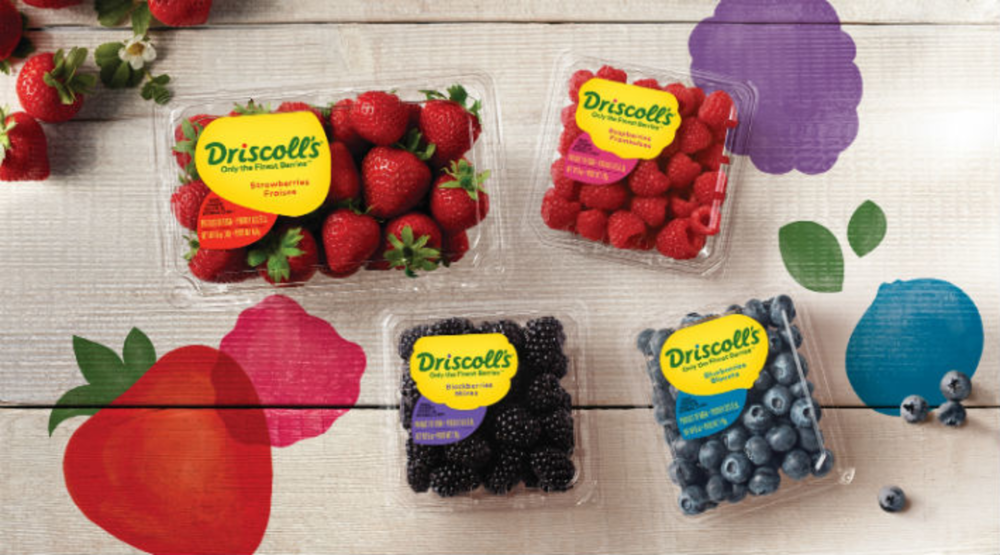Photo source: Driscoll’s
Long gone are the Mad Men days when one lead agency would craft creative ad campaigns for one-way TV mediums. Today, we live in an ever-changing, complex digital world and, regardless of budget, all brand leaders are grappling with understanding this data-driven world of technology and producing effective storytelling.
That’s why brand leaders need to get back to the basics of brand positioning. Too often, we expect ad agencies to have all the solutions when, in fact, in-house teams should be the brand champions and hubs of consumer DNA.
Driscoll’s, the global market leader for fresh berries, went through this very process last year when it rolled out a global unification of brand strategy, design, and communication for the first time in the company’s 100-year history. We hit quite a few bumps in the road, which caused us to rethink the ad agency relationship. We took the reins of our brand positioning, brought the creative responsibility in-house, and sought specialized agency collaborations to execute our mission. Here’s what we learned:
1. Invest in consumer research to understand what drives your category and how your company uniquely fits into the needs of the consumer.
Before filling out one more creative brief, ask yourself if everyone is aligned on a single, clear brand positioning. If you truly understand your brand positioning, it becomes the North Star of where all content creation, storytelling, and winning strategy begins.
Driscoll’s recent campaign work reflects more than four years of consumer journeys. These insights helped us identify why people eat berries, clearly define our brand’s unique positioning, and provide more purposeful and authentic storytelling. Our brand positioning serves as the foundation of all our brand strategy going forward.
Providing brand positioning clarity is a basic step that many marketers seem to be missing. Today’s digital world is filled with cluttered messages that lack alignment and consistency. Don’t add to the noise. Practice perfecting the principles of positioning. Basic traditional marketing approaches from experts like Al Ries, Jack Trout, and Philip Kotler still apply in today’s tech-forward world.
2. Evaluate if a one lead ad-agency solution is right for you.
Moving from research to creative execution is a tricky process for any brand. In 2014, Driscoll’s hired an award-winning ad agency that described themselves as the world’s first creative advertising agency built on crowdsourcing principles. While the partnership started as a fun and innovative brainstorming process, it (unfortunately) didn’t translate our brand positioning to authentic storytelling. We respectfully parted ways and admitted the partnership wasn’t working.
Faced without a lead ad agency, Driscoll’s in-house brand team became the centralized hub for carefully curating partnerships that would bring the best specialized skills and talent together under one cohesive strategy. Our decision to orchestrate the creative vision from in-house with specialized agencies was driven by partners who shared a sense of purpose through collaboration. Pearlfisher led the global work of delivering a new visual identity system, Hand Crank Films produced several compelling videos, and Allison+Partners served as our PR megaphone.
3. Hold agencies accountable for delivering measurable ROI
It’s comforting to know that even the world’s largest advertisers, like P&G and Unilever, are challenging the advertising status quo by cutting the number of agency partners in-half, bringing capabilities in-house, and partnering directly with Facebook, Google, and Snapchat. 2016 marked the first year digital ad spend surpassed television ad spend, according to an eMarketer report. There are no easy answers for improving the “crappy” media supply as P&G’s Marc Pritchard put it, to achieve clear, viewable measurements across all specialty disciplines. Savvy marketers are doing their best to shift their spending so that it reflects a better understanding of what drives actual purchase behavior. The pressure to demonstrate ROI is real.
Driscoll’s feels privileged to be considered a consumer-forward brand in a typically commodity-driven fruit and veggie industry. Our loyal brand advocates have propelled fresh berries to the number one selling produce for the past five years, and we’re running our #BerryTogether campaign and new iconic branding, which is fit for the 21st century. We’ve come up with a strategy that’s driven by internally guarding the heart and soul of our brand positioning.
About the author
Frances Dillard has spent more than 20 years creating compelling brand experiences and driving profitable growth for mission-driven organizations. Dillard has held senior-level roles in general management, marketing, and product innovation in both start-up environments and established high-growth companies. From managing power-house brands like Disney, LeapFrog, and Mattel to rolling-up her “Sand Hill VC” sleeves at a gaming start-up, Dillard is always at the intersection of storytelling and technology. Dillard is currently the director of marketing and global brand lead with Driscoll’s.







